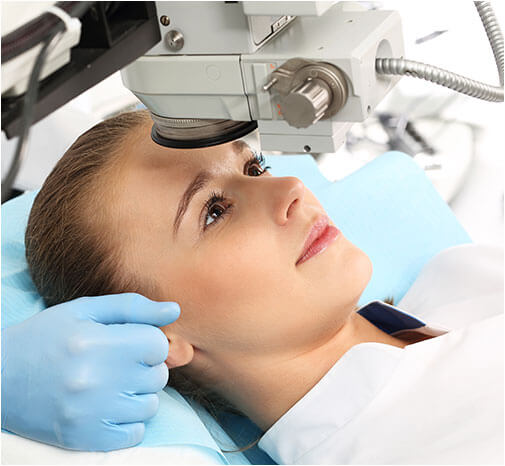Eyelid and Brow Conditions

Eyelid and Brow Surgery
Oculofacial plastic surgeons offer various eyelid and brow surgery options to enhance your appearance and improve the functionality and health of your eyes.
Following types of eyelid and brow surgeries are usually performed:
- Drooping upper eyelid (ptosis repair) surgery
- Upper eyelid blepharoplasty (eye lift)
- Lower eyelid blepharoplasty
- Ectropion repair surgery
- Entropion repair surgery
Ptosis pronounced “tosis” is the medical term for drooping of the upper eyelid, a condition that may affect one or both upper eyelids. When the level of the upper lid margin falls, it can interfere with the upper field of vision. Symptoms include a decreased ability to keep the eyes open, eyestrain, and eyebrow fatigue from the increased effort needed to raise the eyelids.
Who is a Candidate?
Our ophthalmology team may recommend the following surgeries for these conditions:
- Ptosis repair surgery – When your upper eyelid droops over your eye, it can interfere with your upper field of vision. This condition is known as ptosis.
- Upper eyelid blepharoplasty (Eye lift surgery) – If you have overlapping, excess skin and fat on your upper eyelids, it’s probably interfering with your normal vision. An eyelift can reduce the excess skin from your eyelids and allow you to regain your full field of vision.
- Lower eyelid blepharoplasty (Eye lift surgery) – Similarly, a lower eyelid blepharoplasty may help improve your lower field of vision if you have excess skin and fat on your lower lid. However, this is usually a cosmetic surgery to improve the appearance of the eyelids and give a more youthful appearance.
- Ectropion repair surgery – If your lower eyelid margins and lashes are sagging and turning outward, you have a condition known as ectropion. Ectropion repair surgery helps reverse the relaxation of your eyelid tissues.
What to Expect
The procedures mentioned above are performed on an outpatient basis. You will return home that same day and can expect to fully recover within two weeks. Before the procedure, you will receive local anaesthesia to numb the site and surrounding areas, so you should not feel pain during the surgery. The surgeon uses tiny incisions to perform the surgery that are invisible or barely visible when they heal.
